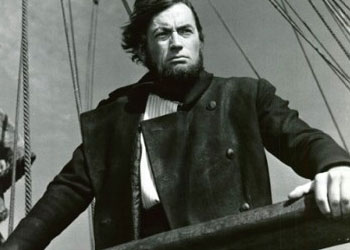Post by DSkillz on Aug 5, 2015 23:51:45 GMT

Captain Ahab
Captain Ahab is a fictional character in Herman Melville's Moby-Dick (1851), the monomaniacal captain of the whaling ship Pequod. On a previous voyage, the white whale Moby Dick bit off Ahab's leg, leaving him with a prosthesis made out of whalebone. Instead of leading the Pequod on a whaling voyage for profit, Ahab seeks revenge on the whale and casts his spell over the crew-members to enlist them in his fanatical mission. When Moby Dick is finally sighted and hunted down, Ahab's hate robs him of all caution and denies him revenge. Moby Dick drags Ahab to his death.
Melville biographer Andrew Delbanco calls Ahab "a brilliant personification of the very essence of fanaticism". F. O. Matthiessen calls attention to the fact that Ahab is called an "ungodly god-like man". Ahab's "tragedy is that of an unregenerate will" whose "burning mind is barred out from the exuberance of love" and argues that he "remains damned". D. H. Lawrence felt little sympathy for Ahab and found that the whale should have "torn off both his legs, and a bit more besides".
The character of Ahab was created under the influence of Samuel Taylor Coleridge's lecture on Hamlet and figures in biblical and classical literature such as Shakespeare and Milton. His prosthesis, for instance, has been taken for an allusion to the Oedipus myth.
Ahab is firmly established in popular culture by cartoons, comic books, films and plays. Most famously, he provided J. M. Barrie with the model for his Captain Hook character, who is obsessed not with a whale but a crocodile.
Ahab was named by his insane, widowed mother, who died when he was twelve months old. At 18 years old, Ahab first took to sea as a boy-harpooner. Less than three voyages ago, Ahab married a sweet, resigned girl, with whom he has a young son. He has been in colleges and among the cannibals, and has seen deeper wonders than the waves. He has fixed his lance, the keenest and surest on the isle of Nantucket, in stranger foes than whales.
Links:
Wikipedia
Shmoop
The Guardian
Record:
W:
L:
Melville biographer Andrew Delbanco calls Ahab "a brilliant personification of the very essence of fanaticism". F. O. Matthiessen calls attention to the fact that Ahab is called an "ungodly god-like man". Ahab's "tragedy is that of an unregenerate will" whose "burning mind is barred out from the exuberance of love" and argues that he "remains damned". D. H. Lawrence felt little sympathy for Ahab and found that the whale should have "torn off both his legs, and a bit more besides".
The character of Ahab was created under the influence of Samuel Taylor Coleridge's lecture on Hamlet and figures in biblical and classical literature such as Shakespeare and Milton. His prosthesis, for instance, has been taken for an allusion to the Oedipus myth.
Ahab is firmly established in popular culture by cartoons, comic books, films and plays. Most famously, he provided J. M. Barrie with the model for his Captain Hook character, who is obsessed not with a whale but a crocodile.
Ahab was named by his insane, widowed mother, who died when he was twelve months old. At 18 years old, Ahab first took to sea as a boy-harpooner. Less than three voyages ago, Ahab married a sweet, resigned girl, with whom he has a young son. He has been in colleges and among the cannibals, and has seen deeper wonders than the waves. He has fixed his lance, the keenest and surest on the isle of Nantucket, in stranger foes than whales.
Links:
Wikipedia
Shmoop
The Guardian
Record:
W:
L:

